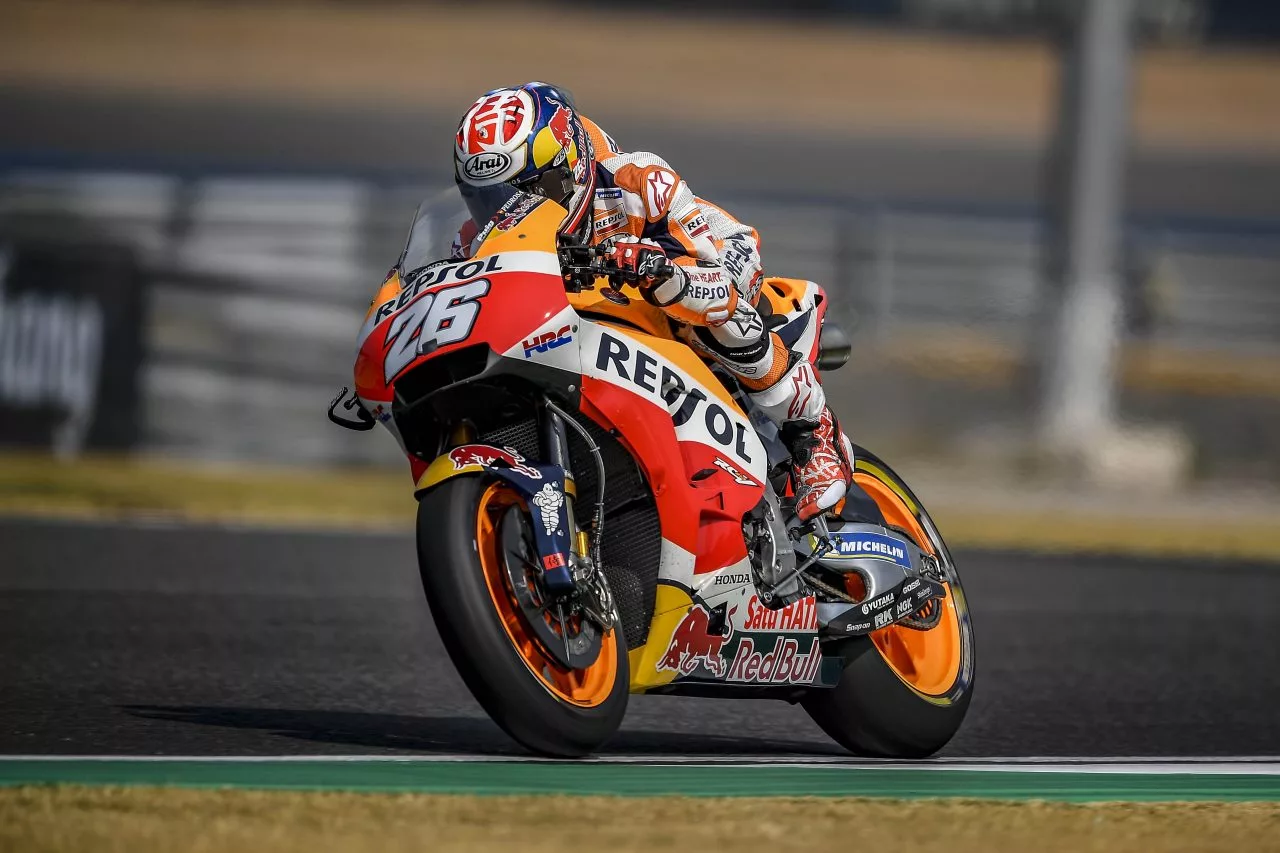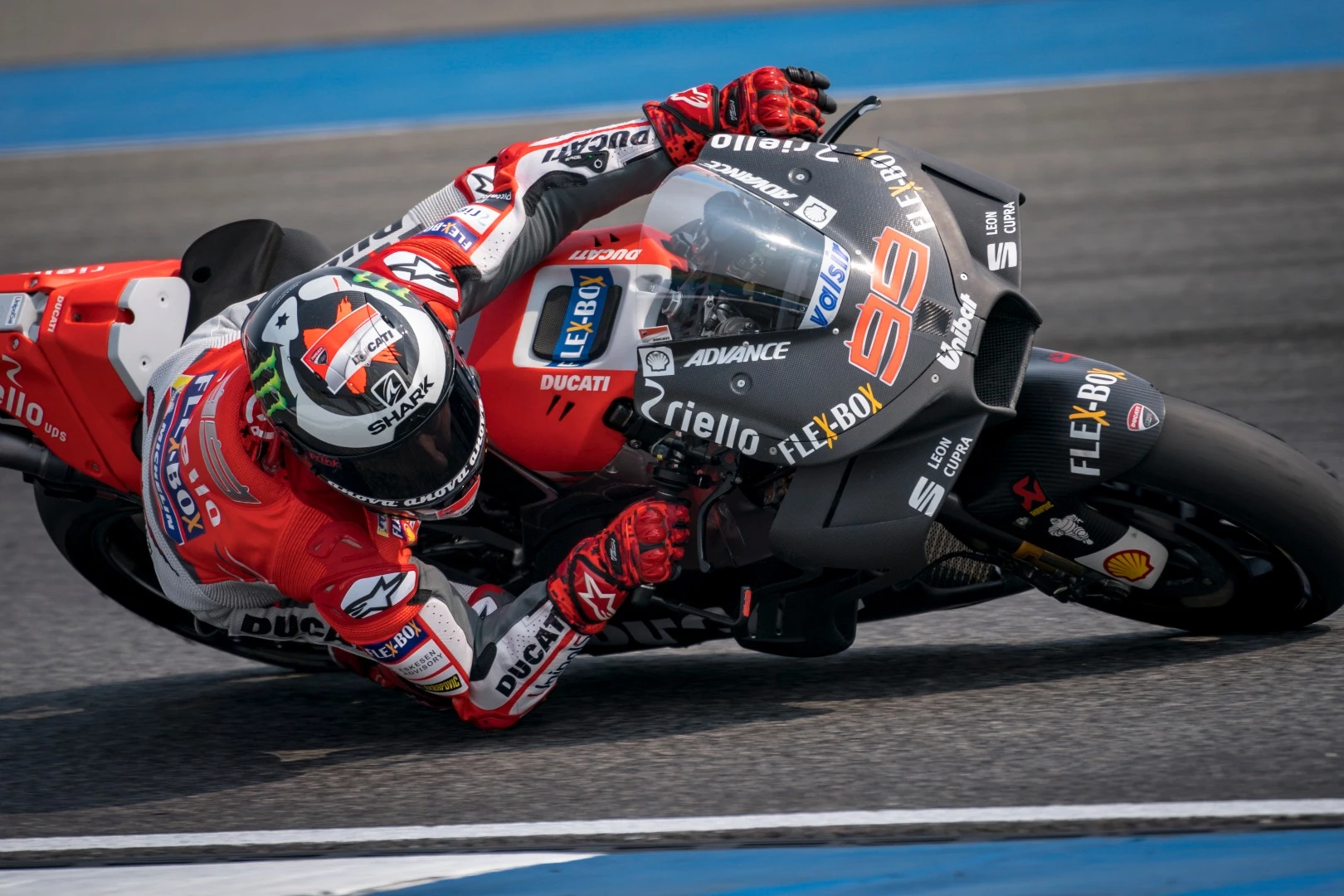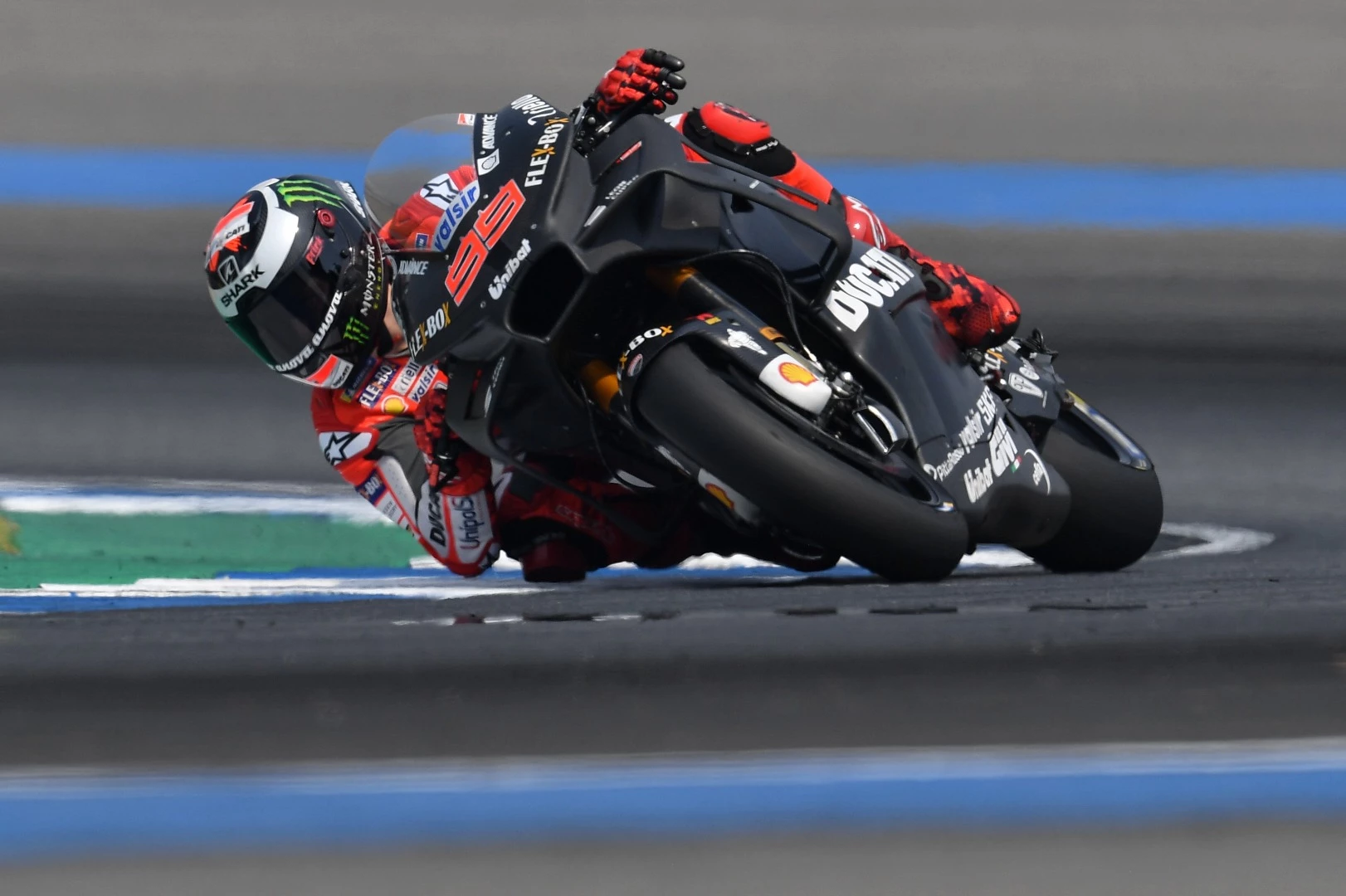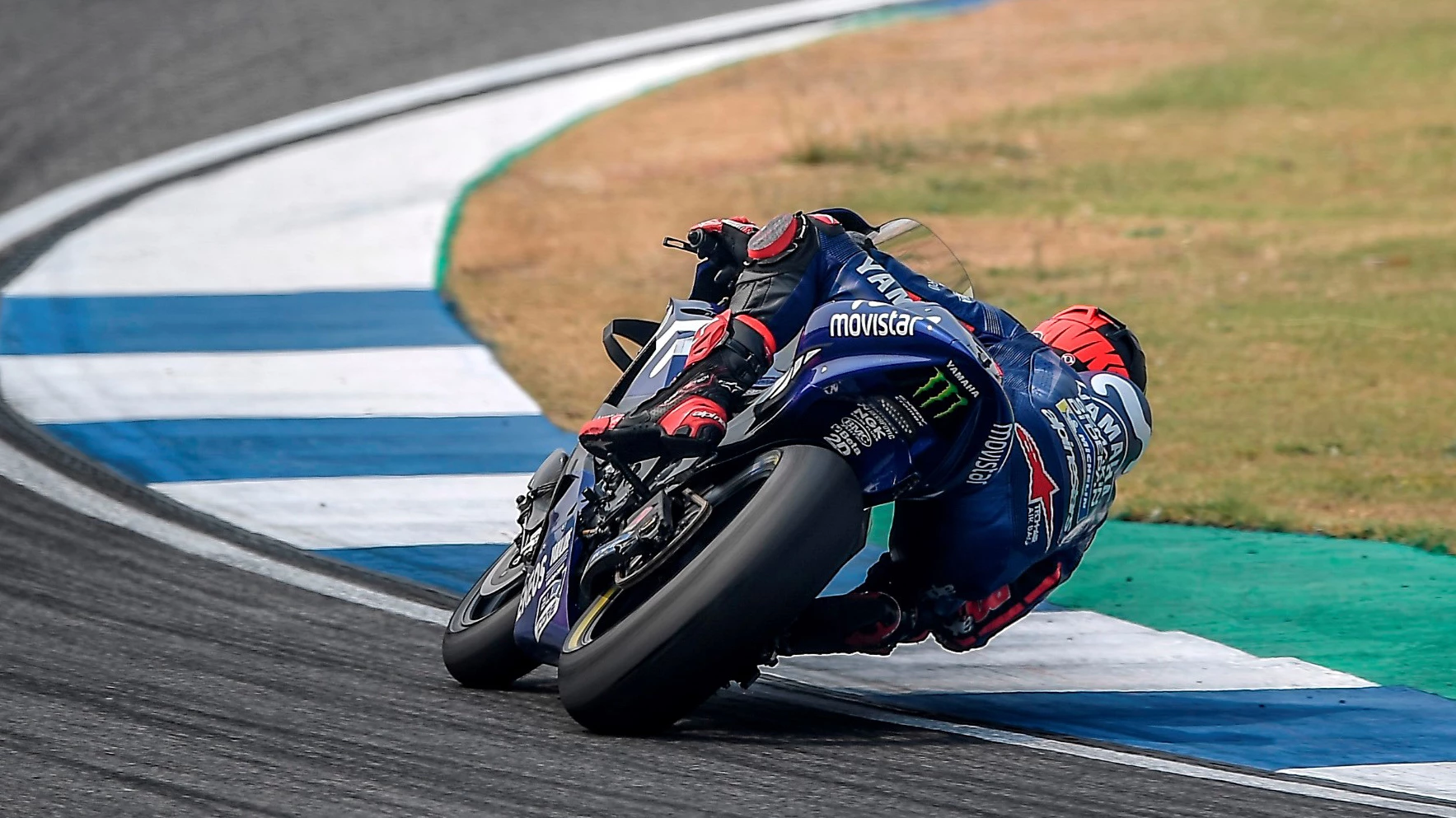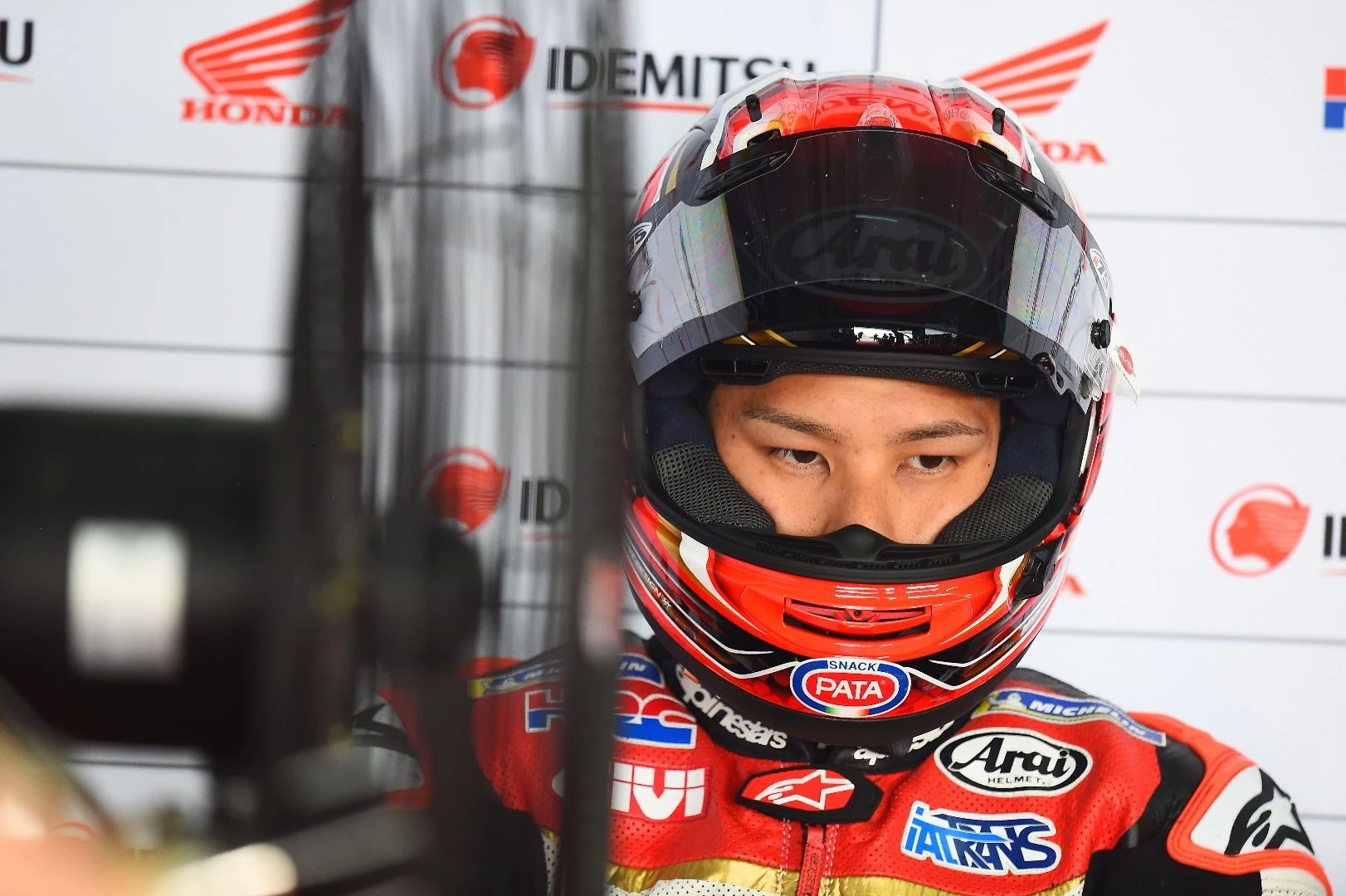The shape of future sports motorcycles has evolved considerably over the last few days as the world's leading sportsbike manufacturers and MotoGP contenders (Suzuki, Honda, Ducati, Yamaha, Aprilia and KTM) evaluated new aerodynamic fairings at the second last test of the MotoGP pre-season at the Chang International Circuit at Buriram, Thailand.
With only one more pre-season test to go, at the Losail International Circuit in Qatar on March 1-3, all of the leading contenders will need to seek pre-approval of their fairing designs before the first round of the World MotoGP Championship gets underway at Qatar on March 18 ... and with every motorcycle on the grid wearing aerodynamic downforce-generating bodywork, it seems inevitable that the next wave of showroom-floor sportsbikes will wear similar bodywork.
Though there is considerable variation in the new designs from manufacturer to manufacturer, no team appears to have found a definitive solution, with almost all riders saying each fairing design had positives and negatives.
That's entirely understandable, because aerodynamics are all about finding a middle ground between downforce and resistance (aerodynamic efficiency). There is no magic bullet, and more downforce will result in a lower top speed.
The looped aerofoils we are now seeing on each side of Grand Prix motorcycles operate just like upside-down aircraft wings to create negative lift, better known as downforce.
The ideal is to gain more time in the corners than you lose on the straights, but thanks to motorcycles being even more complex aerodynamically than a Formula One car, there's much more to consider.
For instance, aerodynamic changes that offer more front-end high-speed stability will make a bike harder to turn. And different riding styles and bike set-up preferences are part of this increasingly complex equation, as additional front end loading on those ever-so-delicate front tires adds yet another variable to the tangle that must be unraveled for each new circuit. What's more, loading the tires of a motorcycle during cornering reduces grip so the equation is much more complex than simply following Formula One doctrine.
Ducati

As the company that began this new aerodynamic "arms race" with its winglets two seasons back, Ducati is expected to be the most innovative of the manufacturers and it proved to be in Buriram. It tried three distinctly different designs across the three days, though all could be seen to be related to the aerodynamic designs we witnessed last year. That's the most radical of the three above, with three-time world champ Jorge Lorenzo twisting the throttle. There are lots of images of all three aerodynamic treatments in the image gallery.
Jorge Lorenzo left Yamaha with three World MotoGP Championships to his credit at the end of 2016. In 2017, he had a wretched year, finishing on the podium only three times in 18 races. In 2018, Lorenzo and the Ducati Team started the year by topping the time sheets at the first test in Sepang that finished on January 30. He then went backwards in Buriram, with Ducati commandeering Danilo Pettrucci's 2017 bike so that Lorenzo could compare his 2018 bike with last year's bike.

"Unfortunately for me these have been three very complicated days, because I was never able to be really competitive" said Lorenzo. "I didn't feel at ease on the GP18 and yesterday we also had a few doubts so we decided to do a back-to-back test with last year's bike. As always happens, there are good and bad points with both versions, but at the moment it seems that the GP18 has a greater potential so we will focus on this bike in the next test in Qatar."

The reason the aerodynamics wars began was the introduction of winglets to assist with wheelie control. Electronic wheelie control involves interrupting the power which by definition, involves going slower. That's why Ducati tried the winglets to achieve the desired effect with airflow rather than having to momentarily turn off the power.
The general rule-of-thumb of more-downforce-equals-less-speed applies though, and last year despite Ducati using its competitive edge in aerodynamics to great effect across the entire season, it chose to run traditional fairings at several tracks where top speed is critical. Most notable among them was Qatar where 2017 pre-season testing showed the addition of downforce aerodynamics reduced the top speed by around 8 km/h.
If there's an upside for Ducati in the pre-season tests, it is the form of Jack Miller on the Alma Pramac Racing GP17 Ducati. Despite running last year's bike with a new fairing, Miller finished the three days as the fastest Ducati and spent all three days at the top of the leader board. Miller reports immense satisfaction with the Ducati's electronics and all reports suggest he is likely to be running at the front when the bikes reach Qatar. With four strong riders, Ducati will be well poised to take on the role as Honda's primary antagonist.
Suzuki

Alex Rins captured the essence of this aero-over-electronic wheelie control perfectly during practice on Saturday when he commented on the new fairing on his Suzuki to reporters. "All the time the front wheel is on the floor we have more power than not on the floor ... so this one helps me to have more acceleration and more speed," he said.

Suzuki's implementation is by far the most stylish, with curves that might not be out of place when the next generation turbo-charged Hyabusa that has been broadly rumored to be seen for the first time later this year.
Yamaha

Yamaha is entering 2018 in poor shape, with factory riders Valentino Rossi and Maverick Viñales nowhere near the top of the time sheets. Viñales finished the three day test half a second behind the leader, and Rossi was nearly three-quarters of a second shy.
Fortunately for Yamaha, Monster Yamaha Tech 3 satellite rider Johann Zarco (above) has been in scintillating form and he positively blitzed the final day of testing with three separate laps under the 1:30 mark, meaning he was the only rider to get within striking distance of the impressive 2018 Honda factory RC213V.

The calmness of Rossi belies the unfortunate circumstance in which the veteran is beginning the season. Celebrating his 39th birthday on the first day of testing, the winner of 115 Grands Prix has seen it all before and it showed in the way he calmly stated the facts.
Despite being twelfth on the time sheets after three days, he seemed unconcerned. "I think that we improved today," he said. "I rode a 1:30.5s, but unfortunately I made a mistake at the end of a really good lap, else I could have done a 1:30.2s, and we're all very close. Like last year, it's difficult to understand where we stand. A lot of people were strong in Malaysia and here they struggled, and also the opposite. We have to improve, because we didn't make much progress compared to last year, especially when it comes to the electronics. We have a lot of work to do and at this moment we have to get through it – but that's today, maybe in Qatar it will be better."

This time last year, Maverick Viñales was on top of the world, having topped every session of every test, not to mention being the bookmakers' choice for the title. It didn't last, despite him taking the first two wins of the 2017 season. This year things don't look nearly as good, with the Yamaha YZR-M1 seemingly becoming more difficult to ride in its 2018 guise. Viñales cites the power as being too smooth, and hence not stressing the tires enough to get the grip he wants.
Aprilia

Despite a pairing of top class riders in Aleix Espargaro and Scott Redding, the Aprilia Racing Team Gresini RS-GP is only likely to make up the numbers in 2018, finishing the three day Thailand test in 14th and 20th places, and following up 13th and 21st place in the test in Malaysia.

In both tests Aleix Espargaro (above) was the faster of the riders, though in both cases nearly a second per lap adrift of the fastest. The Aprilia's box-kite downforce generators looks to be relatively simplistic in comparison to the highly integrated Honda aerodynamics and those of the leading teams.
KTM

Alongside Aprilia, KTM is one of the concession teams this year, and after its first full season in 2017, much is hoped for the Red Bull KTM Factory Racing in 2018. It is still very early days for the team, but it was interesting to see the visual treatment given to the aerodynamic fairings on the bikes of Bradley Smith and Mika Kallio, as the team looks to have already incorporated the shape into a new corporate look. It will be interesting to see how it evolves.
The changing global climate for motorcycles

In addition to the shape of the motorcycle changing rapidly in Thailand, the prospects for more Asian venues joining the championship improved with large crowds attending the Thai circuit just to watch testing, with 30,000 through the gate on Sunday. Just look at the size of that grandstand and the number of people watching.
Last year 771,000 motorcycles were sold in all of Europe, compared with 5.88 million motorcycles in Indonesia, 1.8 million in Thailand, 1.32 million in Philippines and 435,000 in Malaysia. Asia contains two-thirds of the world's population and the majority of humans who still want to ride a motorcycle. Motorcycle racing's natural habitat is changing, and it makes far greater commercial sense to stimulate sales in Asia than it does in Europe, where sales continue to decline.

Beware Honda
If there was a theme to the Buriram testing it was that Honda at last appears to have matched Ducati's engine horsepower. Trap speeds are a reliable indication of horsepower and the fastest trap speeds for the three GP18 Ducatis on hand were Dovizioso 334.3 km/h, Lorenzo 328.2 km/h and Petrucci 331.2km/h, while Honda's three 2018 bikes were ridden by Pedrosa 331.2 km/h, Marquez 330.2 km/h and Crutchlow 331.2 km/h. Not surprisingly, Marquez said after testing that he now feels sure which engine he will use for the 2018 season.
Not only were Honda's trap speeds consistently equal to those of the Ducati riders, Honda also seems to have finally overcome the issues of persuading the Magneti Marelli ECU to give it smooth corner exits and Marquez, Pedrosa and Crutchlow were clearly much happier than ever before with the way their bikes hooked up and the lap charts over three days showed it.
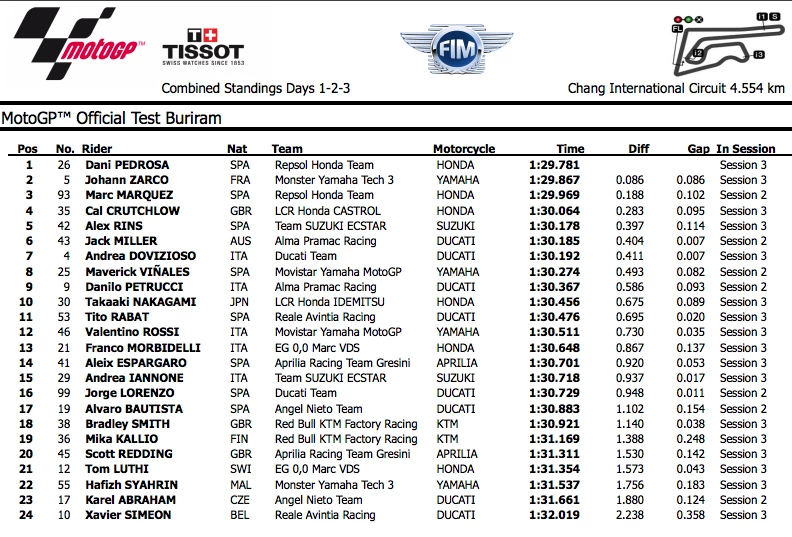
Marquez in particular looked in ominous form, setting his fastest lap on day two with the first sub-1 minute 30 second lap ever seen at the Chang circuit.
He did not attempt a time attack on the last day of testing in Thailand, preferring instead to conduct a race simulation in the afternoon. Any other riders who bothered to watch the simulation closely would have been disheartened, as it featured a long string of high-1:30 laps, as he comfortably lapped at speeds which were among the best laps by the other best riders. Our take is that Marquez dodged putting in a fast lap because it would have highlighted just what good shape he and the bike are in – embarrassingly good shape.
Marquez celebrated his 25th birthday on Saturday, and he begins the year with six World Championships already to his credit (one 125cc title, one Moto2 title and four MotoGP titles). He won his first title at the first attempt in 2013, then further titles in 2014, 2016 and 2017. In 2015 he crashed, a lot, suffering six DNFs in the season. Since then he has seemingly perfected being able to "uncrash" a motorcycle and his display in Thailand was one of a seasoned veteran who knew exactly what he was doing and he went about it in a workmanlike manner.
He achieved the goals of the company over the three days, putting in 78 laps (355.2 km) on Friday, 97 laps (437.24 km) on Saturday and 96 laps (441.8 km) on Sunday, fully assessing a range of parts for the season and clocking up more laps than any other rider over the three days ... 271 laps and 1,234 km.
Most experts now consider Marquez has a bike as good as any on the grid, as well as being the best rider. Marquez was already "odds-on" to win the MotoGP Championship in 2018 at international bookmakers before the Buriram tests began, but bookmakers have shortened his odds of winning the title since then.
While the sports motorcycle is clearly evolving in shape faster than ever before, the championship is more likely than ever to go to the familiar pairing of Marquez and Honda.
The future shape of the sports motorcycle?

It is fascinating to ponder just how far behind auto racing that motorcycle aerodynamic development is. Aerodynamic exploration has been ongoing in both car and motorcycle Grand Prix racing since the mid-1950s.
Sixty years ago, the first aerodynamic efforts in motorcycle racing saw the advent of the "Dustbin" fairing, pictured below on a mid-1950s factory Mondial 125cc Grand Prix racer.

These enclosed fairings boosted the top speed of the motorcycle by as much as 20 mph, but enabled side gusts of wind to blow motorcycles right off the racetrack and the dustbin was soon banned.
Aerodynamic development in Formula One racing was really kickstarted by the introduction of the Mercedes-Benz W196 at the 1954 French Grand Prix, with its aerodynamic streamlined body making every other racing car of the period look immediately outdated.

Juan Manuel Fangio and Karl Kling finished 1-2 in that first race on a country roads circuit at Reims, with the two fastest laps and a top speed of more than 300 km/h far in excess of its competition.
The closed-wheel aluminum body had been developed in a wind tunnel, and after initial testing and the first emphatic win, it looked like a great idea. Ironically, it would suffer an ignominious defeat at its next start and was quickly reverted to the open wheel design of its contemporaries. At the following British Grand Prix at Silverstone, the car's ungainliness in cornering saw it suffer a rare defeat because even Fangio could not control it. Its streamlined body was really only suited to high-speed tracks made up of fast straights and slow corners and after Silverstone, it was only ever fielded at Monza, both in 1954 and 1955.
Aerodynamics in Formula One is now a fine art and a deep science requiring gigflops of computing power, and there is no question of aerodynamic development in motorcycle racing having been refined to nearly the same degree. And as the development of prototype fairings is now really only in its second year, we're clearly at the very beginning of the process, and we are quite some way from understanding the complexities of sports motorcycle aerodynamics.
Whether we will see the fairing shapes become proprietary visual cues for each manufacturer as they are in automobiles will be a fascinating aspect to follow.
The first tests of the 2018 MotoGP season may indeed be recognized at some point as a landmark in motorcycle development, when the first tentative steps were taken in a new scientific endeavor.



















